Preservation by drying, salting or freezing
Contents
Skin preservation by drying, salting or freezing
If a fresh animal skin cannot be processed immediately in the tannery, it is stored and preserved in order to halt decay. This must be done quickly to prevent bacterial growth, which usually begins approximately 2 hours after slaughter. Bacteria can destroy the skin (putrefaction) and render it unusable for making fur or leather. The optimal temperature for storing the skins is between 4 - 7 ° C. Hanging them to drain the blood is also important.
Approximately 30% of the freshly skinned hides are processed directly and the main part of the remaining 70% is preserved with salt. This is only a rough estimate and there are significant differences between countries and continents.
Skin salting by dry salting and wet salting (brine preservation)
The salting preservation method primarily drains the skin. It is essential that the salt (chemical: sodium chloride) is fresh. A salt which has already been used for preservation contains too many microorganisms and therefore does not guarantee good preservation when reused. The salt should not contain impurities, due to iron compounds. Likewise, only very small amounts of calcium or magnesium compounds may be present as impurities.
The method of salting is free from cooling, but must be carried out very conscientiously in order to avoid putrefaction of the skin. Sufficient salt is required to completely saturate the skin so as to stop any bacterial growth. For this reason, the rawhide has to be salted with 40 - 50% salt in relation to the skin weight. This equates to more than one centimetre layer of salt on the flesh side of the skin. Therefore, a skin with 40 - 50 kg requires approximately 20 - 25 kg of salt.
The process involves sprinkling the skin with solid salt (dry salting) or by treating the skin with salt solutions (wet salting =brine preservation).
Salted hides can be kept up to one year and are resistant to temperature fluctuations. However, they must be stored in a certain manner after drying. Skin areas cannot touch or lie on each other. Salted skins are a favourite food for mice and rats. The hides should not be kept in a humid environment as they soon become a breeding ground for insects which lay their eggs on them. Laid and stacked according to regulations, around 40 hides can be temporarily stored on a pallet and about 600 hides fit into a container. The salting process can be carried out by hand or by using a machine.
Wet salting also plays a role in goatskin and sheepskin (without and with hair). Due to traditional regional celebrations, there are seasonal peaks in slaughtering and in order to distribute the skins produced by the slaughtering as required, the skins are wet salted for interim storage.
Salted rawhide in the tannery.
Before the skins can be processed further in the tannery, they have to be desalinated again. To do this, the hides, which have salt on their surfaces, are transported through cage-like rotating lattice structures. The rotation causes the skins to move and excess salt falls through the bars. The salt of the skin dissolved in liquid is rinsed out.
Skin preservation by freezing - cooling
Freezing is the most straightforward method. Fresh skins are packed in plastic and stored in cooling rooms. Apart from the energy costs of cooling, this method has a lot of advantages. Freezing stops the decomposition process immediately, the shelf life of the stored raw material is unlimited and, if required, the skins can be processed immediately - as if they were coming in straight from the slaughterhouse.
The cooling process usually takes place immediately after slaughtering as the raw hides need to be cooled quickly. Cooling typically occurs at temperatures around the freezing point, often between 0°C and 4°C. The exact duration of intermediate storage and the temperatures can vary depending on the specific requirements of leather manufacturers and the supply chain. However, raw hides are generally cooled for a period ranging from several hours to a few days.
Especially in Europe, the fresh skin processing of raw hides is now playing a more important role. Immediately after slaughtering, the raw hides are cooled and transported in refrigerated trucks to the tanneries, where they are processed further a few hours later. The advantage over salt preservation is the avoidance of salt wastewater. With the short cooling time, the energy costs are not too high.
Cooled Rawhide.
Skin preservation by drying
The simplest and oldest preservation process is drying. The skin is thus stretched in the dry air in such a way that air can flow around the hide from all sides. The moisture required for the development of microorganisms is thereby removed from the skins. The skins should dry quickly, but never at too high temperatures (not above 30 ° C) and never in direct sunlight or next to a radiator, since this leads to irreversible damage of the skin collagen! Dried leathers are hard.
The skin must not be exposed to moisture again during drying (e.g. from sudden rain). Otherwise, the decomposition process will be initiated, the skin will begin to rot, and insects will be attracted. Since drying involves a lot of work, this process is more likely to be used by smaller companies in warmer climates. Drying is accelerated by prior fleshing and ensures better skin quality. The advantage of drying is a very long storage time before further processing.
Dried stingray leather.
Additional information
Video about leather production
The leather production in a modern tannery.
| Tanning methods |
|---|
| Chrome tanning - Vegetable-tanned leather - Synthetic tanning - Tanning with fats and oils |







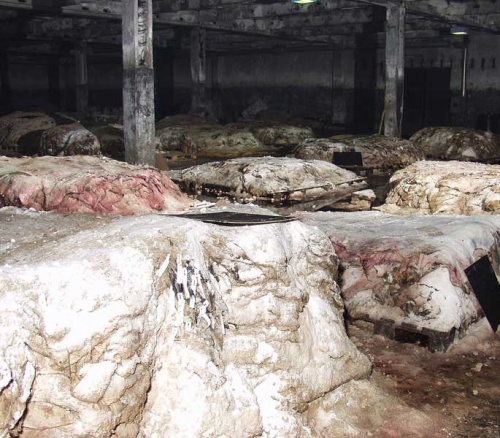
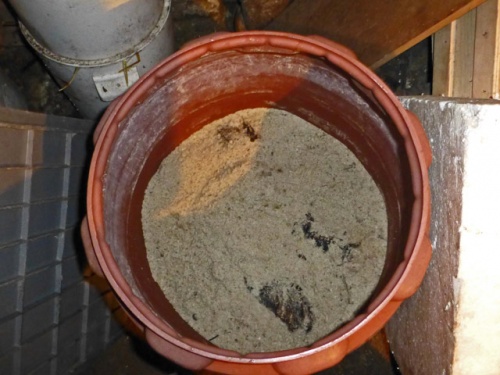
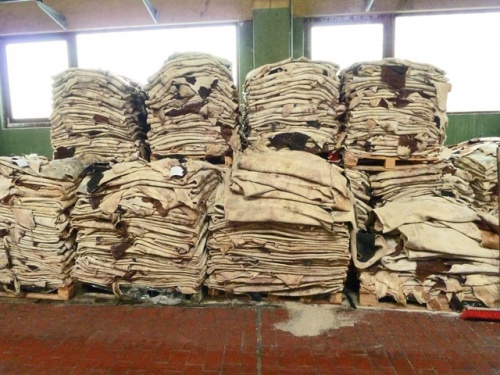
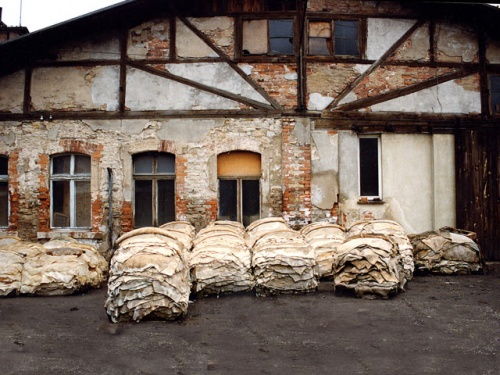
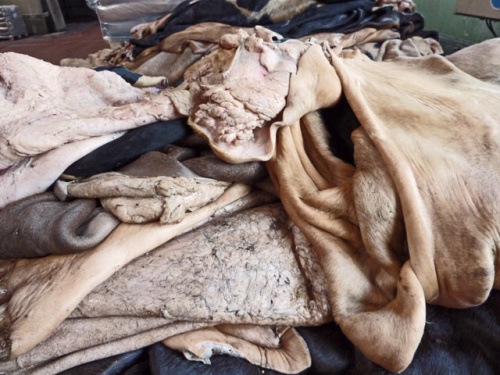
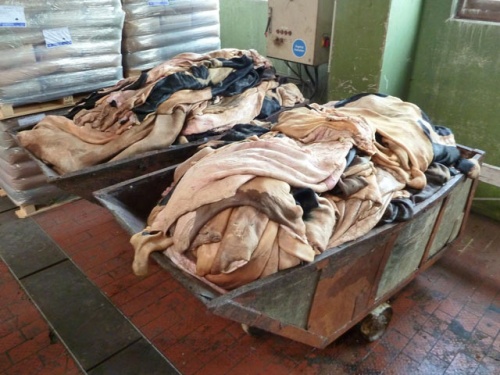
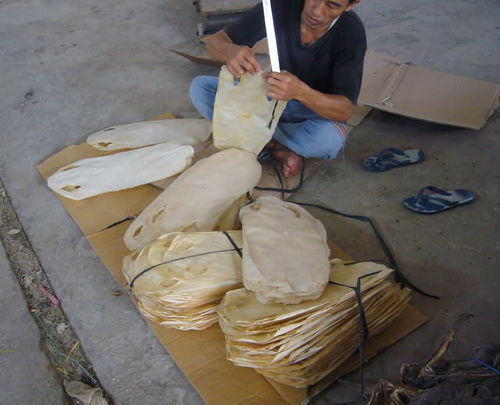

 a kotori web solution
a kotori web solution